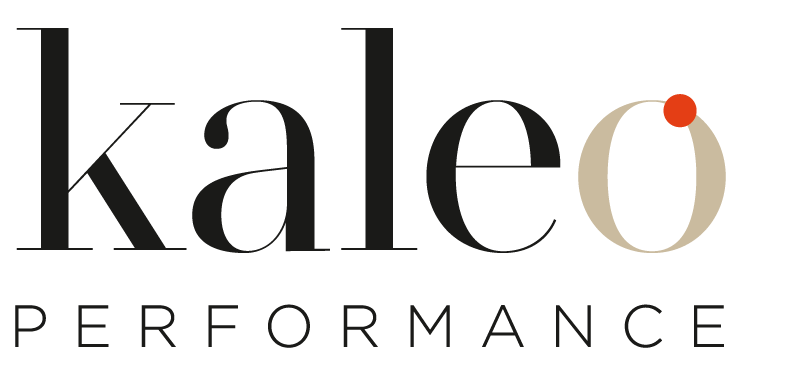Is your mid-sized company (100-999 employees) struggling to manage end-user workplace services? You’re not alone! From scalability to security, we’ve seen it all. Here’s our battle-tested guide to navigating the top challenges and maximizing your IT ROI. Learn the Do’s and Don’ts to transform your workplace and empower your teams and businesses.
This guide is just the beginning.
Over the coming weeks, I’ll break down each of these core areas — from ITSM maturity and procurement strategy to remote workforce security and asset lifecycle management.
Each article will offer actionable insights, tools, and frameworks tailored to the real-world challenges mid-sized companies face in managing end-user services effectively.
The Guide:
Strategic Alignment (Prerequisite):
• CHALLENGE: Implementing EUWS solutions without a clear, company-wide strategy leads to misalignment, wasted resources, limited business impact, and a failure to balance cost and benefit.
• DO: Before implementing any EUWS solution, define a strategy aligned with the company’s overall business goals. This requires active participation from key stakeholders, including the CIO, CFO, and representatives from each business unit. The strategy should be based on clear Key Performance Indicators (KPIs) that directly support business objectives, measure the effectiveness of EUWS initiatives, and explicitly consider the cost-benefit ratio of different services. Strive for an 80/20 approach, recognizing that chasing marginal gains in SLA coverage (e.g., aiming for 99.99% uptime instead of 99.9%) often results in disproportionately higher costs.
• DON’T: Proceed with EUWS initiatives in a siloed manner, without a clear understanding of how they contribute to overall business success and are financially justified. Avoid neglecting stakeholder input or relying solely on IT’s perspective without considering the financial and operational impacts on departments. Furthermore, avoid the trap of pursuing perfection at any cost; prioritize solutions that provide the greatest value for most of the users within a reasonable budget.
1. Scalability & Standardization:
• CHALLENGE: Difficulty standardizing device configurations, software images, and support processes; scaling support without runaway costs.
• DO: Implement standardized device configurations & software images using a centralized management tool. Automate tasks like password resets to reduce support tickets.
• DON’T: Let support costs spiral out of control with ad-hoc IT financial operation solutions. Instead, monitor the number of incidents per asset to identify problem areas and trends to understand root cause, solve them and avoid support cost increase.
2. User Experience vs. Cost Optimization:
• CHALLENGE: Balancing modern digital tools with tight budgets; managing user satisfaction without overinvestment.
• DO: Prioritize user-friendly self-service portals and efficient support channels that are easily accessible and provide clear solutions for common issues.
• DON’T: Overinvest in premium services without a clear ROI. Focus on solutions that provide the greatest value for most users; as rule of thumb, don’t always seek for lowest price possible.
3. Remote & Hybrid Workforce Support:
• CHALLENGE: Ensuring consistent support and access for remote/hybrid employees; managing devices and updates outside the network in a secured manner.
• DO: While BYOD can be considered, enforcing robust endpoint security policies across all company-owned devices using Mobile Device Management (MDM) solutions and consistent security awareness training (with regular tests such as phishing and smishing) is critical. For many mid-sized companies, managing BYOD presents significant challenges, including maintaining consistent software versions, security patches, and compliance. Furthermore, the complexities of potential multi-brand and multi-operating systems can significantly impact cost-effectiveness (e.g., parts availability and specialized expertise for break-fix repairs or security updates. Therefore, carefully evaluate the total cost of ownership and the security implications before implementing a BYOD program. In many cases, focusing on secure, company-owned devices offers a more manageable and cost-effective solution.
DON’T: Neglect the security of devices outside the corporate network. Implement policies that require users to maintain updated antivirus software and secure Wi-Fi connections. Assume limited in-house expertise excuses non-compliance. Partner with a managed security service provider (MSSP) to address compliance gaps
4. Security & Compliance:
• CHALLENGE: Securing endpoints across various devices (BYOD, company-owned); meeting compliance standards with limited expertise.
• DO: Enforce robust endpoint security policies across all devices (BYOD included) using Mobile Device Management (MDM) solutions and consistent security awareness training completed by running regular tests (phishing, smishing, …).
• DON’T: Assume limited in-house expertise excuses non-compliance. Partner with a managed security service provider (MSSP) to address compliance gaps.
5. ITSM Maturity:
• CHALLENGE: Immature ITSM practices: limited automation, weak workflows, lack of KPIs; difficulty integrating cloud/on-prem tools.
• DO: Select a industry standard tool, which response to latest service management practice and security compliance, as well as daily KPIs to monitor performance. Embrace automation, streamline ticketing, and track key KPIs (e.g., resolution time, first-call resolution rate, and user satisfaction) to identify areas for improvement.
• DON’T: Tolerate weak workflows and a lack of performance visibility. Implement a comprehensive ITSM tool that can’t integrates with both cloud and on-premises environments.
6. Vendor & Tool Fragmentation:
• CHALLENGE: Managing multiple tools/vendors without governance; lack of integration causing inefficiencies such as unnecessary time required and exploding costs.
• DO: Centralize governance and integrate workplace tools for efficiency by selecting platforms with open APIs and standardized integration protocols.
• DON’T: Let multiple vendors create a chaotic, inefficient ecosystem. Consolidate vendors where possible and prioritize solutions that offer broad functionality.
7. Asset Lifecycle Management:
• CHALLENGE: Limited visibility into asset lifecycles; challenges with inventory, warranties, and refresh cycles.
• DO: Implement a system for tracking assets from purchase to disposal (including hardware, software licenses, and cloud subscriptions) to optimize spending and ensure compliance.
• DON’T: Lose track of inventory, warranties, and refresh cycles – it’s money wasted. Establish triggers for asset refresh based on performance (number of incidents per asset..), warranty expiration, or lifecycle estimates.
8. Change Management & Training:
• CHALLENGE: Resistance to new technologies; poor adoption due to insufficient change management and training.
• DO: Invest in thorough change management and training for new technologies by creating comprehensive documentation, offering multiple training formats (e.g., webinars, in-person sessions), and providing ongoing support.
• DON’T: Roll out new tools without preparing your users for adoption. As reminder 80% of incidents are due to changes. Communicate the benefits of the new technology, address user concerns, and provide a clear roadmap for the transition.
9. Procurement:
• CHALLENGE: Investing in new tools / technologies requires careful considerations and proper sourcing strategy.
• DO: Careful selection of the IT providers is a must and shall be accompanied by clear procurement process and sourcing strategy.
• DON’T: Carbon copy what you could see or hear from others as each company has its own IT reality which requires proper strategy (e.g., a double sourcing strategy might be a great idea from one company and a disaster for another).
Ready to turn your workplace services into a real business advantage?
Managing end-user services doesn’t have to be overwhelming — when strategy, governance, and user experience are aligned, mid-sized companies can scale with confidence, stay secure, and deliver real value.
Whether you’re reviewing your EUWS maturity or planning a full digital overhaul, we’re here to help. Let’s talk about how to simplify the complex, reduce costs, and improve user experience — without compromising on compliance or innovation.
Reach out to discuss how we can support your end-user services strategy — as a trusted advisor, delivery partner, or simply a second opinion
Follow us to stay tuned and get practical strategies you can apply immediately — whether you’re improving what you have or planning a full transformation.
Co-written by Paul NEUMAN / Patricia LHOTE DE NEEFF

